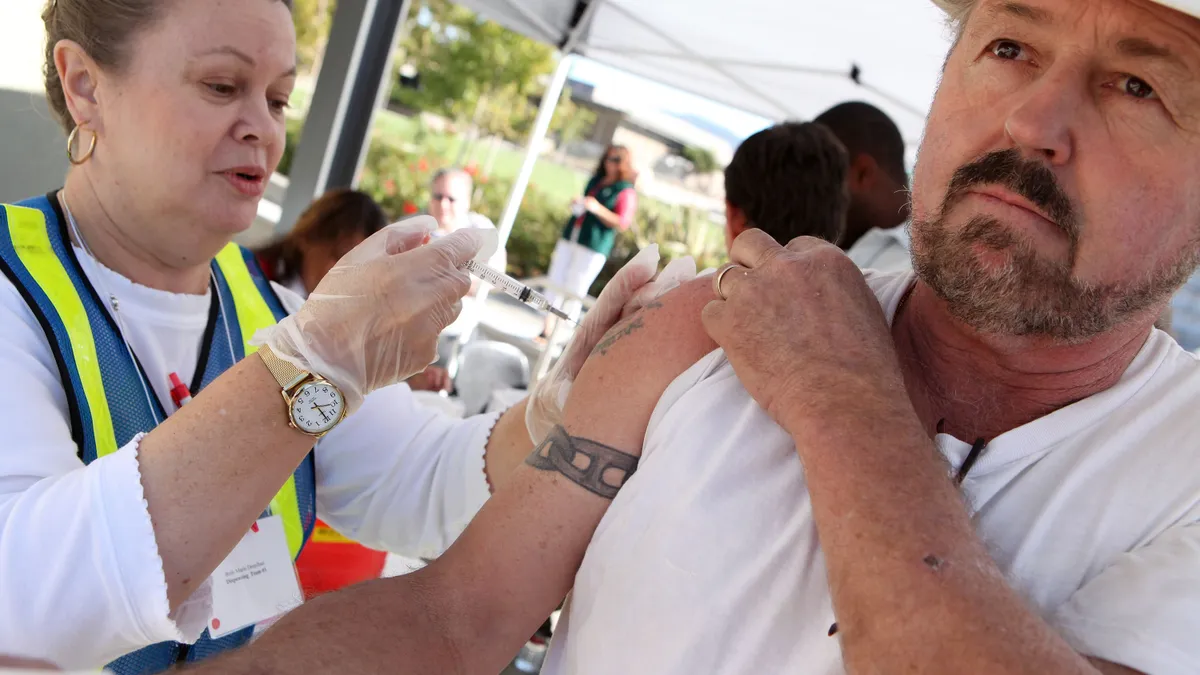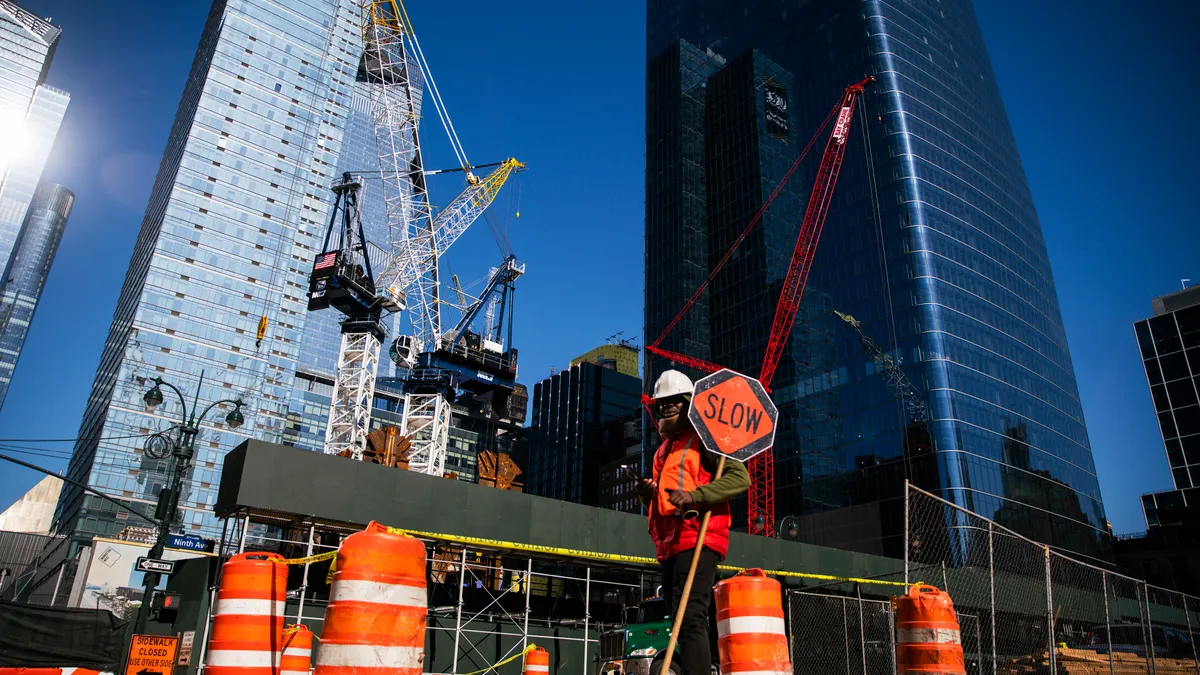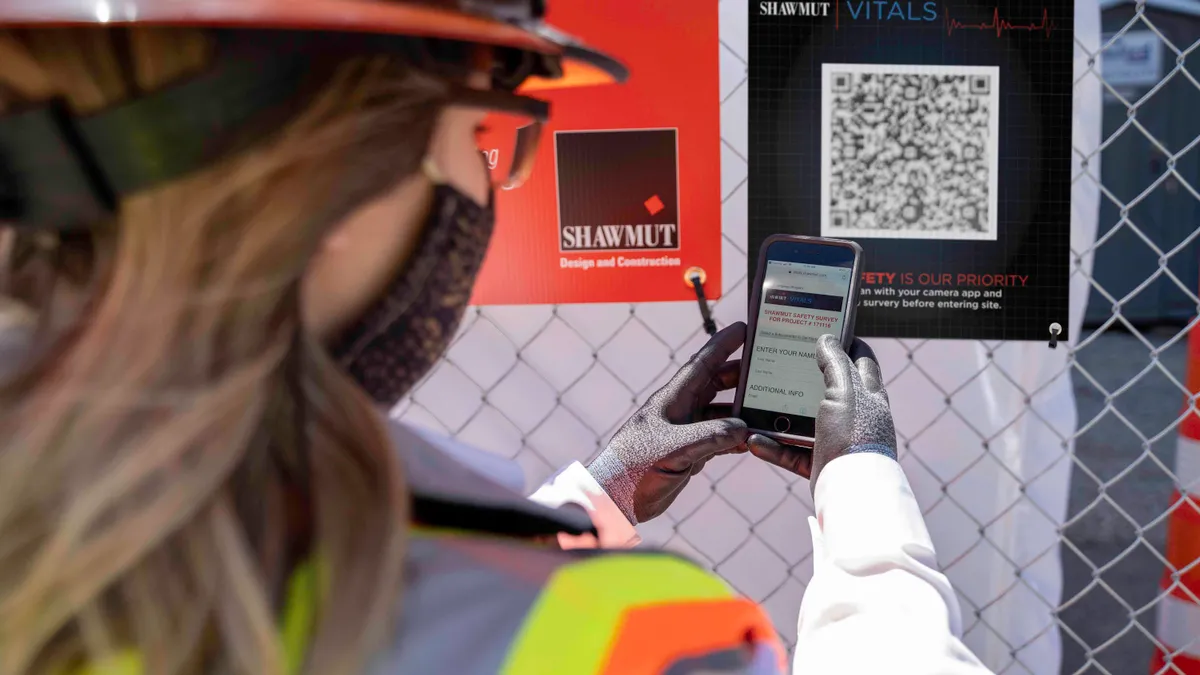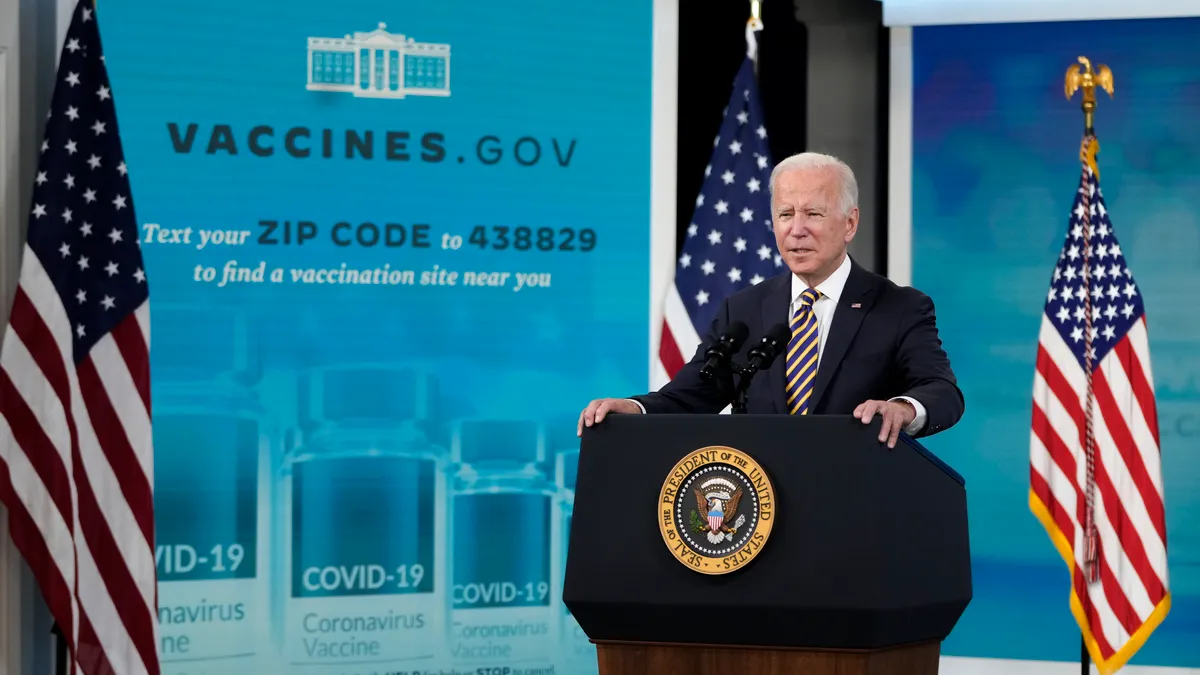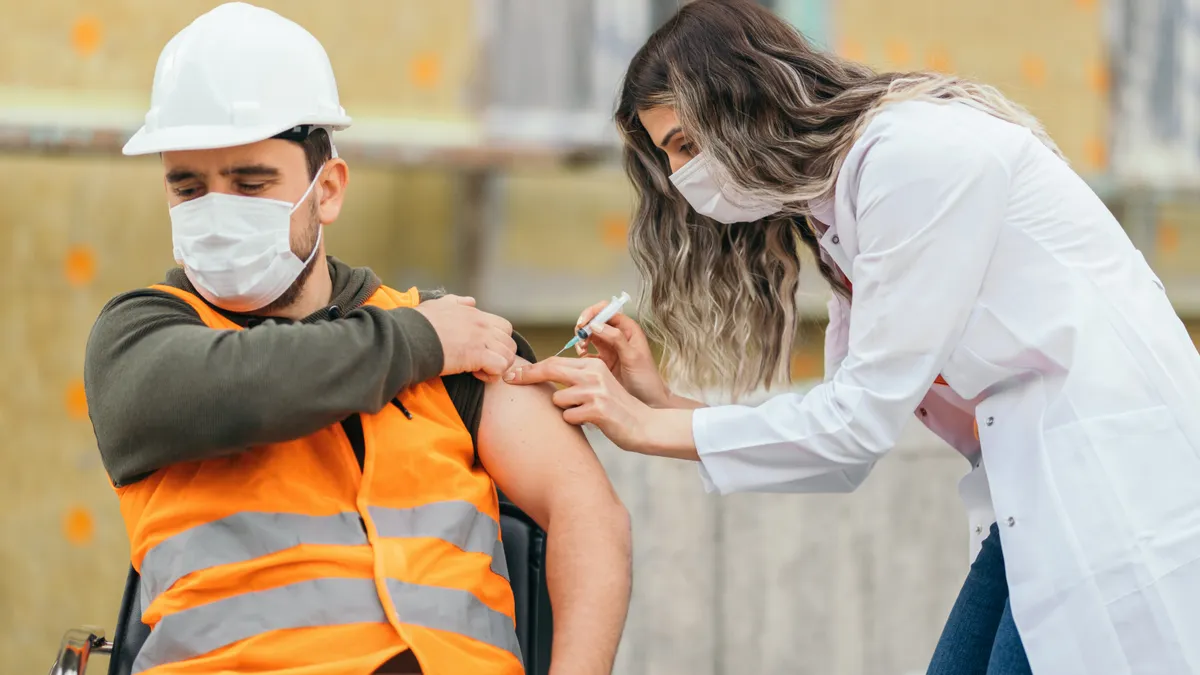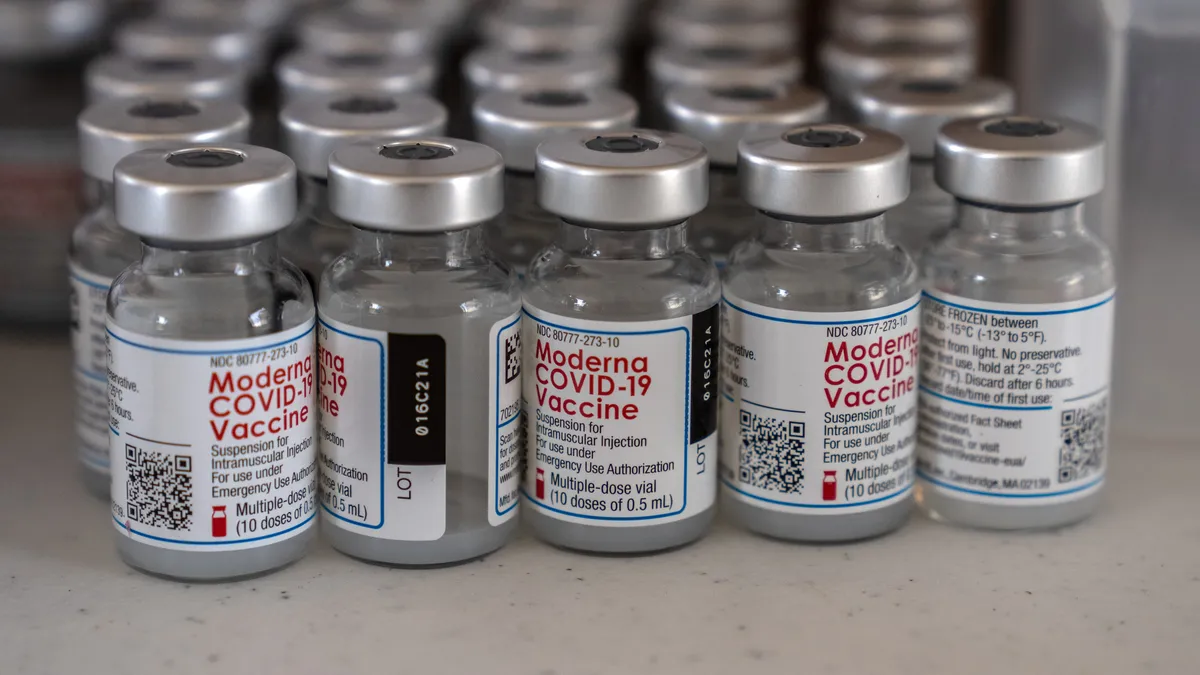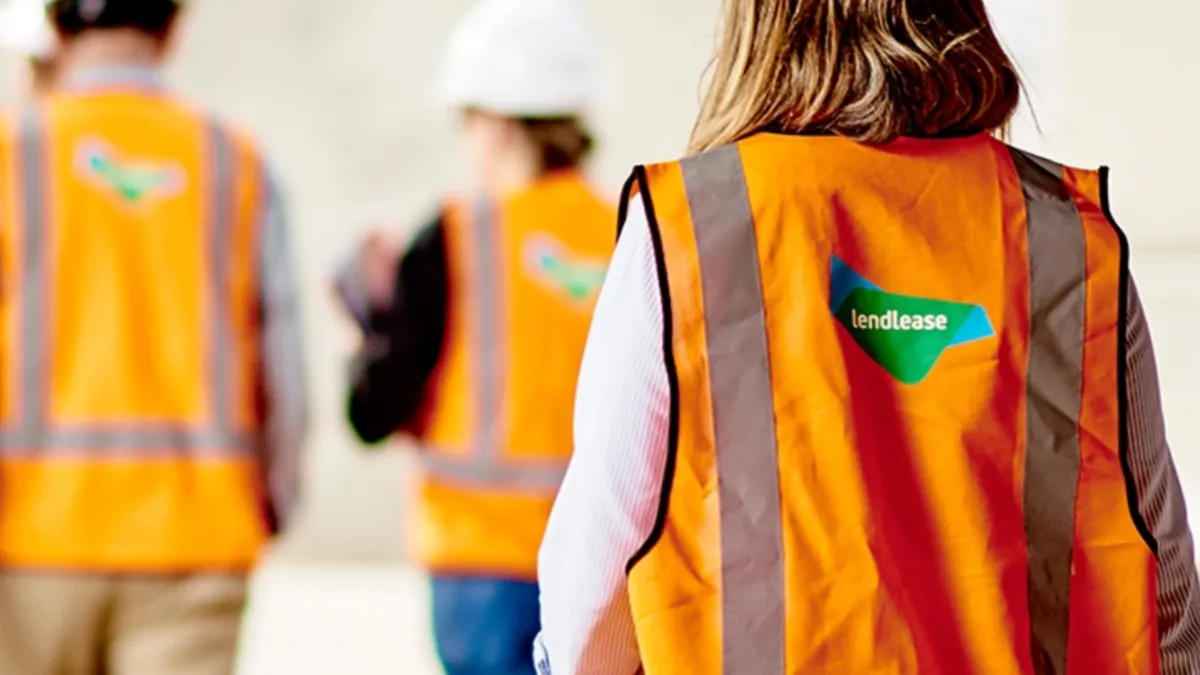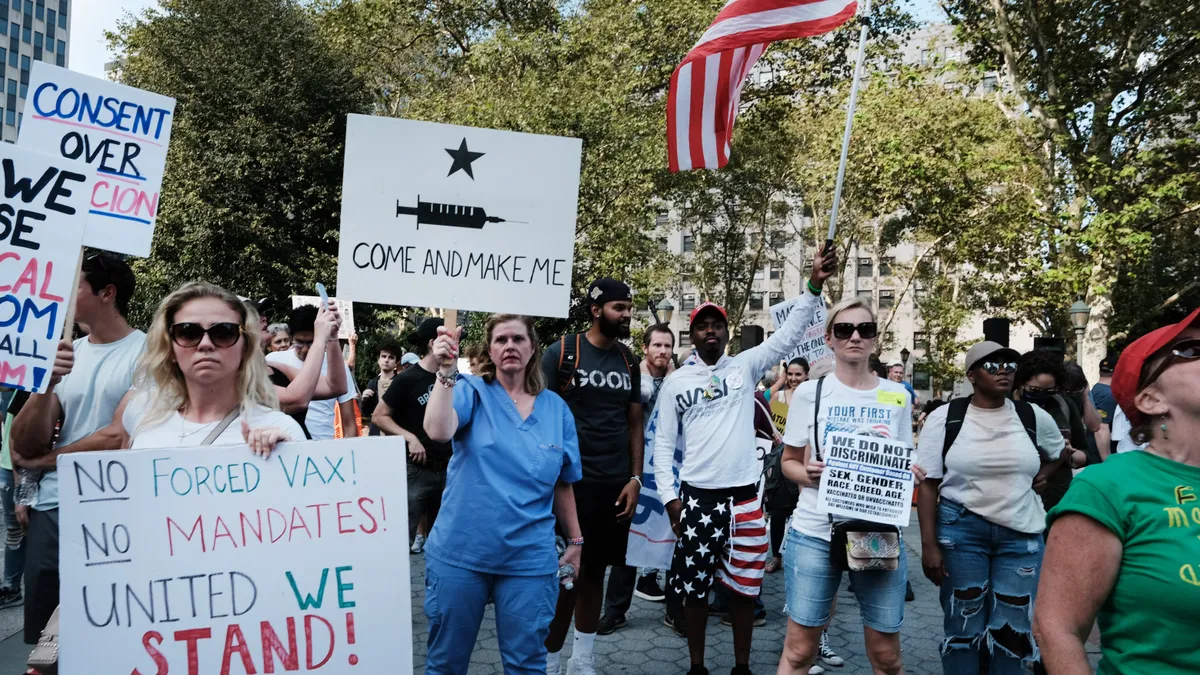Construction was supposed to be getting back to normal by now.
In June, with vaccines rolling out broadly across the U.S. and COVID-19 case numbers plummeting, Labor Day was heralded by many as the date workers would return to offices, and the pandemic would largely be a fading memory.
But things aren't quite working out that way.
"We started reopening in June, and there was a lot of hope," said Laura Guzman, vice president of marketing and communications at Milpitas, California-based XL Construction. "But as we started to watch the most recent trends, we've had to hit the pause button again."
Steps include following local mask mandates, social distancing on jobsites and limiting company meetings and gatherings, Guzman said.
XL isn't alone. Other construction pros who thought they would be plowing ahead on projects unfettered by the virus are now having to step back and re-institute many of the same protocols they relaxed earlier this year. They say that new COVID-19 challenges have emerged as construction heads into the second autumn of the pandemic.
"Contractors that we work with are doubling down on their efforts to make sure workers both in their offices and on jobsites, are following local and federal mandates," said Brian A. Wolf, a partner in the Fort Lauderdale, Florida, office of construction law firm Smith, Currie & Hancock. "They're taking the health and safety of their employees and the public very seriously."
Rising case numbers
Driven by the highly contagious delta variant and breakthrough infections even among the fully vaccinated, COVID-19 cases have surged again, and recently hit 100,000 new daily infections nationally, a metric not seen since February. Healthcare professionals predict the number could reach 200,000 within weeks. Analyzing preliminary data from six states, the New York Times recently reported that breakthrough cases accounted for between 18% and 28% of all new infections.
Josh Stark, senior vice president of construction at Chicago-based developer and contractor Focus, said the wider-ranging impacts of the current surge could hinder construction further, especially as material suppliers are just now ramping back up to capacity.
"We're seeing suppliers come back online, which is great. But if COVID starts to hit in a big way again, then do those businesses have to shut down?" Stark said. "That affects our industry from a supply perspective, so that's definitely a concern."
The surge is happening as mask mandates have returned in many localities, at the same time that many large employers, including the federal government, the U.S. military, United Airlines, Walmart and Disney have announced they'll require employees to be vaccinated to return to work.
For construction, those issues are unfolding against the backdrop of an industry that continues to face heightened levels of vaccine hesitancy, with more than 40% of workers consistently saying they would choose not to get vaccinated, even if they had the opportunity to do so. Today, that hesitancy is running headlong into worries from workers who are vaccinated, as well as mandates from project owners who are now increasingly requiring only vaccinated workers on their jobsites.
According to Silver Spring, Maryland-based construction safety nonprofit CPWR — The Center for Construction Research and Training, construction vaccination rates have consistently lagged other occupations, while vaccine hesitancy has remained comparably high.
"In the last few weeks, we've started to get vaccine mandates from owners on jobs," said Kyle Peacock, CEO of San Francisco-based Peacock Construction, who notes that approximately 75% of his direct employees are vaccinated, although rates among his subs are lower. "All of our healthcare clients are doing it, but we've also had a couple office tenants that said they're only going to let vaccinated people into their offices. It's an issue we're trying to solve."
A major concern among contractors now is that the perennial labor shortage within the construction industry, which had already been exacerbated by the pandemic, will only become worse as clients require vaccinations for jobsites.
Take a recent letter to members from the Associated General Contractors of America's Inland Northwest Chapter, which includes eastern Washington state, shortly after Democratic Gov. Jay Inslee ordered most state workers to get vaccinated by Oct. 18.
"It is important to note that this mandate does apply to all employees, contractors, subs and suppliers that work on or have access to state worksites," Cheryl Stewart, the chapter's executive director, wrote. "I know many of you will have employees that will choose not to work on state projects if vaccination is required. It is also certain that state agencies will lose employees over this issue, so project delays all around are going to be the norm moving forward."
Indeed, Ken Simonson, chief economist for the AGC, citing construction employment levels that remain below their pre-pandemic peak in 36 states, said delta could cause shockwaves throughout the industry.
"The fast-spreading COVID-19 delta variant may make it harder to find employees eligible to work on restricted sites and may also depress demand if some owners defer projects," Simonson said in a statement about July employment data.
Keeping track
Beyond the impact of the number of workers they'll have for vaccinated jobsites, contractors facing mandates from clients are also challenged by how to implement these kinds of requirements.
"How do you monitor it? Are you going to be checking vaccination cards at the door?" said Peacock. "It would be relatively easy if it was just our employees, but we have hundreds of subcontractors coming to our jobsites every day, and then you have vendors making deliveries."
One solution Peacock and others have implemented is Safe Site Check In, a jobsite screening app that workers have used throughout the pandemic, which can be customized to ask about workers' vaccine status. That's what San Jose, California-based commercial contractor Landmark Builders has done.
"We've got it now so there's basically only two questions: 'Are you vaccinated?', which gives them a yes-no choice, or 'I choose not to answer,'" said Sheri Dizon, Landmark's CFO, who noted that everyone in the firm's offices is vaccinated, “but in the field, it's very different."
The company has been tracking responses from the app on vaccination status, and has seen a 60% vaccinated, 40% unvaccinated rate among its subs, a ratio that aligns closely with construction worker vaccination surveys. "It's a political debate that you’re not going to win," Dizon said. “But if they're not vaccinated, they'll tell you.”
Landmark's clients have also asked for fully vaccinated workers on jobs. But in one case where a well-liked supervisor hadn't been vaccinated, the client allowed him to stay on the project. "They liked him, so they said he was fine," Dizon said.
Contractors such as XL and Peacock said they haven't issued vaccine mandates for their companies at this point, though they didn't rule out the possibility in the future. Instead, they have launched programs to encourage workers to get vaccinated and provided education to help workers decide. "We brought in medical experts to explain the safety components and answer questions," XL's Guzman said. "We.ve just made an extreme effort of education to try to get as many folks as possible to make that choice for themselves."
Peacock said that while his lawyers have told him he can mandate workers to get vaccinations, there are still issues that have kept him from doing so. "We are having that dialogue internally, but while everybody says you can legally do it, there's not a lot of case law surrounding it," Peacock said. "There are still some liabilities with that."



